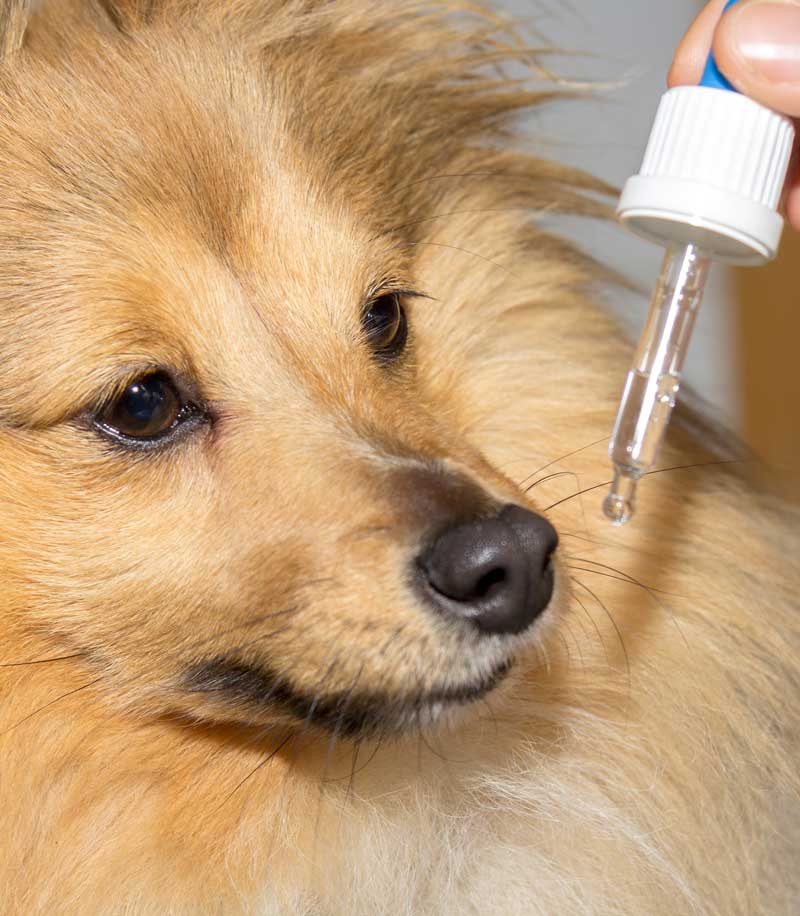Dogs suffering from blindness are not always completely blind. Some dogs may be only blind in one eye, partially blind or even intermittently blind.
The world is a huge dangerous playground for any dog, but it becomes far more dangerous for blind dogs. Falling down stairs or walking into traffic become very real concerns for the owner of a blind dog. Blindness can also be a terrifying experience for your dog. If you feel your dog is having trouble seeing, you should see your veterinarian immediately. Even if your dog isn’t completely blind, it will still be a huge chance in their lifestyle and the sooner it’s addresses the easier it will be on both of you.
Ailment Guides:
Different types of blindness in Dogs
Dogs suffering from blindness are not always completely blind. Some dogs may be only blind in one eye, partially blind or even intermittently blind. A partially blind dog can still see shapes and light while intermittently blind dogs have their vision come and go. Regardless of what type of blindness, however, the symptoms are still the same.
canine blindness
Causes of blindness in dogs?
Blindness can be caused in several different ways. Sometimes an injury is to blame while it could also just be a hereditary disease like Progressive Retinal Atrophy (PRA). In some cases, blindness is just a side effect to another disorder such as diabetes, hypertension or kidney failure.
Cataracts is also a common cause for blindness in dogs. It’s painless and sometimes only produces partial blindness, while Glaucoma is the opposite. Glaucoma can be quite painful for your dog and if not controlled will lead to complete blindness.
Older dogs can also suffer from Sudden Acquired Retinal Degeneration Syndrome, or SARDS. This is more common in smaller breeds like Pugs and Dachshunds and for some reason affects females more often than males. Professionals still don’t know for sure what causes SARDS.
Breed specific blindness is also common in the following breeds:
- Spaniels
- Beagles
- Chihuahuas
- Siberian Huskies
- Shih Tzus
- Shar-Peis
- Malamutes
- German Shepherds
- Poodles
- Great Danes
- Dalmatians
- Chow Chows
- Bassett Hounds
Signs and symptoms your dog may be experiencing blindness
Depending on the cause of blindness, there are many different symptoms and every case is a bit different. Some symptoms may be physical while others may be behavioral. You know your dog best and noticing any combination of these symptoms could mean their eyesight is deteriorating.
Physical symptoms:
- Eye redness
- Enlarged pupils
- Cloudiness of the eyes
Behavioral symptoms:
- Bumping into furniture
- Clumsiness
- Jumpiness
- Apprehensive during play
- Struggling to find food/water
- Hesitant to play outside
- Confusion
- Depression
- Sleeping a lot
- Anxiety
Learn More:
Top Ten Benefits Of Cbd For Your Dog
Cbd A Lifelong Supplement And Remedy For Your Pet
How Cbd Can Help With Aggressive Dogs
Treatments for blind dogs
There are different treatments for dog blindness, depending on the cause of it. Unfortunately, there is no treatment for Progressive Retinal Atrophy (PRA) or Sudden Acquired Retinal Degeneration Syndrome (SARDS). If your dogs blindness is a side effect to another disorder such as diabetes or hypertension it can be treated by medication from your veterinarian, combined with a special diet and exercise routine. Surgery is an option for Glaucoma and Cataracts and eye drops are used in many cases to reduce pain and delay complete blindness.
Why CBD can be an effective treatment & preventative for blindness in dogs
CBD – or Cannabidiol – can be very effective at supporting eye health.
Cannabidiol (CBD) can be very beneficial for maintaining your dog’s immune system, cardiovascular system and overall vitality. CBD helps to lessen the effects of lethargy, gastrointestinal issues and reduces anxiety, aggression and stress-related disorders.
Think of CBD as a supplement that can reduce the severity and frequency of most symptoms of cataracts and glaucoma. On the other hand, it is not specifically formulated to combat the degeneration of your dog’s vision. CBD acts as an immunity support, pain & inflammation remedy, and helps to prevent infections or tumors that might contribute to blindness.
Cannabidiol is a phytocannabinoid that has been shown to have a prominent effect on numerous ailments – including epilepsy, arthritis and cancer. Remedies containing CBD achieve this by interacting with your dog’s endocannabinoid system. Almost all animals, like people, have an endocannabinoid system; this network of neurotransmitters is integral to physiological processes like memory, mood, pain, stress and appetite.
This complex biosystem is very prevalent in dogs in comparison to other species. Canines have a high concentration of CB1 & CB2 receptors in their brainstem. CB1 receptors affect the brain, lungs, vascular system and muscles, gastrointestinal function; whereas, CB2 receptors are linked to bones, skin spleen and glial cells. In combination, CB1-CB2 collaborate in influencing the overall immune system, liver, kidneys, bone marrow, pancreas and brainstem.
CBD can help your dog by producing anti-inflammatory, anti-anxiety, antipsychotic, antispasmodic and analgesic effects indirectly – that is, CBD interacts with your dog’s ECS (Endocannabinoid System) opposite to THC which directly binds to the Cannabinoid Receptors of the body. This does two things: makes the positive remedial properties more bioavailable to your dog; and lessens or negates the psychoactive effects, such as those associated with THC ingestion.
As you can see by the scope of ailments that are affected by CBD, it is clear how introducing CBD into your dog’s routine can benefit their eye health.
Ailment Guides:
Cbd Oil For Panosteitis In Dogs And Puppies
Health Risks For Obese Cats
Staph Infections In Dogs








